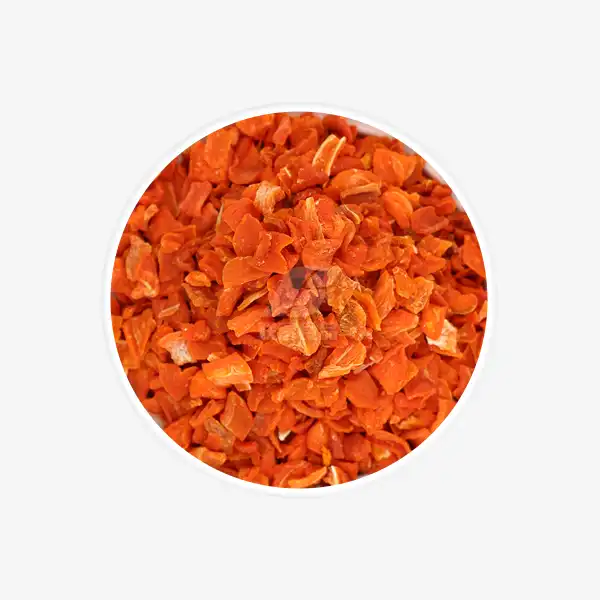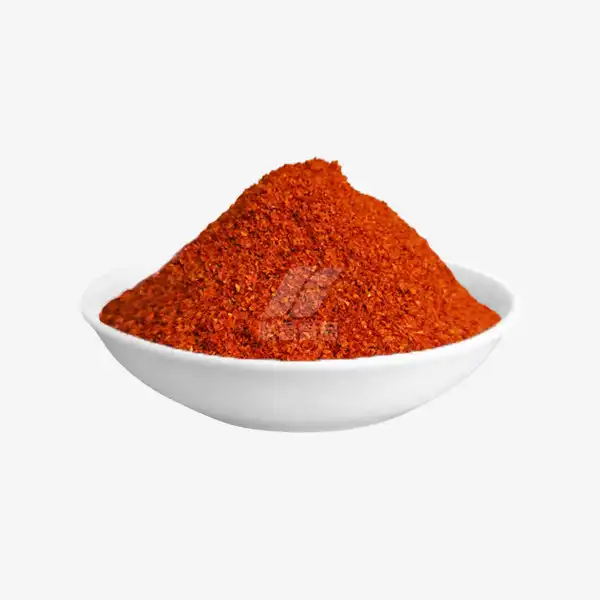How to Rehydrate Dehydrated Diced Onions for Cooking?
Dehydrated diced onions are a convenient pantry staple, offering the flavor and aroma of fresh onions with extended shelf life. However, to unleash their full potential in your culinary creations, it's crucial to master the art of rehydration. This comprehensive guide will walk you through various methods to bring your dehydrated onions back to life, provide cooking tips, and address the age-old question of how they compare to fresh onions.
Quick Rehydration Methods for Diced Onions
Rehydrating dehydrated diced onions is a straightforward process that can be accomplished through several methods. The choice of method depends on your recipe requirements and time constraints.
Hot Water Method
This is the most common and versatile method for rehydrating diced onions:
- Place the desired amount of dehydrated onions in a bowl.
- Pour hot water over the onions, using a ratio of 1 part onions to 2 parts water.
- Allow the onions to soak for 15-20 minutes, or until they reach your desired consistency.
- Drain any excess water before using in your recipe.
Cold Water Method
For recipes where you want to maintain a crunchier texture:
- Place the dehydrated onions in a bowl and cover with cold water.
- Let them soak for 30-60 minutes, stirring occasionally.
- Drain and use as needed.
Broth Infusion
To add extra flavor to your rehydrated onions:
- Heat vegetable or chicken broth to a simmer.
- Add the dehydrated onions and remove from heat.
- Let them steep for 15-20 minutes before draining and using.
Direct Addition Method
For soups, stews, and slow-cooked dishes:
- Add the dehydrated diced onions directly to the pot.
- They will absorb liquid from the dish and rehydrate during cooking.
- This method works best for recipes with longer cooking times.
Microwave Rehydration
For a quick rehydration option:
- Place dehydrated onions in a microwave-safe bowl.
- Add water to just cover the onions.
- Microwave on high for 1-2 minutes.
- Let stand for 5 minutes before draining and using.
Remember, the rehydration time may vary depending on the size of your diced onions and their initial moisture content. Always check the texture before incorporating them into your dish.
Cooking Tips Using Rehydrated Diced Onions
Once you've successfully rehydrated your diced onions, it's time to put them to good use in your culinary creations. Here are some expert tips to help you make the most of your rehydrated onions:
Sautéing Rehydrated Onions
Rehydrated onions can be sautéed just like fresh onions, but with a few adjustments:
- Drain the onions thoroughly before adding them to the pan.
- Use medium heat to prevent burning, as rehydrated onions can cook faster than fresh ones.
- Add a touch more oil or butter than you would for fresh onions to prevent sticking.
Incorporating into Soups and Stews
Rehydrated onions are perfect for adding flavor to liquid-based dishes:
- Add them early in the cooking process to allow their flavor to infuse the broth.
- If using the direct addition method, account for the extra liquid the onions will absorb.
- Adjust seasoning towards the end of cooking, as the onions may intensify the overall flavor.
Enhancing Dry Rubs and Spice Blends
Dehydrated onions can be used to create flavorful dry rubs:
- Grind rehydrated onions into a paste using a mortar and pestle.
- Mix with other spices for a unique, onion-infused dry rub.
- Use sparingly, as the flavor can be more concentrated than fresh onions.
Creating Flavorful Rice Dishes
Incorporate rehydrated onions into your rice for added depth:
- Add drained, rehydrated onions to your rice cooker or pot before cooking.
- For pilaf-style dishes, sauté the rehydrated onions in oil before adding rice and liquid.
- Experiment with different onion-to-rice ratios to find your preferred flavor intensity.
Boosting Burger Patties
Rehydrated onions can add moisture and flavor to homemade burgers:
- Mix drained, rehydrated onions into your ground meat before forming patties.
- Use about 2 tablespoons of dehydrated diced onions per pound of meat.
- Allow the mixture to rest for 10-15 minutes before cooking to distribute flavors.
Elevating Salad Dressings
Create unique salad dressings with rehydrated onions:
- Blend rehydrated onions with oil, vinegar, and your choice of herbs for a custom vinaigrette.
- Use the onion-infused liquid from rehydration as a flavor base for dressings.
- Finely chop rehydrated onions and mix into creamy dressings for added texture.
Crafting Savory Baked Goods
Incorporate rehydrated onions into bread and pastries:
- Drain and pat dry rehydrated onions before adding to bread dough.
- Mix into savory scone or biscuit batters for a flavor boost.
- Use as a topping for focaccia or other flatbreads before baking.
Remember, rehydrated onions may cook faster than fresh ones, so keep a close eye on your dish to prevent overcooking. Additionally, you may need to adjust the liquid content in your recipes slightly when using rehydrated onions, as they can release some moisture during cooking.
Do Rehydrated Onions Taste Like Fresh Ones?
The question of whether rehydrated onions taste like fresh ones is a common concern among home cooks and professional chefs alike. While rehydrated onions can certainly mimic many qualities of fresh onions, there are some notable differences to consider:
Flavor Profile
Rehydrated onions often have a more concentrated flavor compared to fresh onions. This is because the dehydration process removes water, leaving behind intensified compounds responsible for the onion's taste. When rehydrated, these flavors are released, resulting in a robust onion essence. Some describe the taste as slightly sweeter and less pungent than fresh onions.
Texture Differences
The texture of rehydrated onions can vary depending on the rehydration method and cooking technique:
- Properly rehydrated onions can achieve a texture similar to cooked fresh onions.
- They may be slightly softer than fresh onions, especially when used in soups or stews.
- For recipes requiring a crunchy texture, rehydrated onions might not be the best substitute for raw, fresh onions.
Aroma Intensity
The aroma of rehydrated onions, such as dehydrated diced onions, is often more subtle than that of fresh onions. This can be advantageous in dishes where you want onion flavor without overpowering other ingredients.
Cooking Behavior
Rehydrated onions behave differently during cooking:
- They typically cook faster than fresh onions, requiring less time to soften and caramelize.
- Rehydrated onions may not brown as readily as fresh onions when sautéed.
- They tend to absorb flavors from other ingredients more readily, making them excellent for marinades and spice blends.
Nutritional Considerations
While the dehydration process can cause some loss of vitamin C and other heat-sensitive nutrients, rehydrated onions still retain many of their beneficial compounds:
- They are a good source of dietary fiber and various antioxidants.
- The concentration of certain minerals, like potassium and calcium, may be higher in dehydrated onions by weight.
- The allicin content, responsible for many of onion's health benefits, remains largely intact in properly dehydrated and rehydrated onions.
Versatility in Cooking
Rehydrated onions offer unique advantages in certain culinary applications:
- They're excellent for use in dry rubs and spice blends where fresh onions would introduce unwanted moisture.
- Rehydrated onions can be easily incorporated into baked goods without affecting the moisture balance of the recipe.
- They're ideal for camping trips or situations where fresh produce is not readily available.
Consistency in Flavor
One notable advantage of rehydrated onions is their consistency. While fresh onions can vary in flavor intensity depending on factors like season and variety, dehydrated onions offer a more standardized flavor profile, which can be beneficial in commercial food production or when consistency is key in a recipe.
Conclusion
In conclusion, while rehydrated onions may not be an exact replica of fresh onions in terms of taste and texture, they offer a convenient and flavorful alternative that excels in many culinary applications. Their concentrated flavor, ease of use, and long shelf life make them a valuable ingredient in both home and professional kitchens. By understanding their unique properties and how to use them effectively, you can harness the full potential of rehydrated onions in your cooking.
Mastering the art of rehydrating dehydrated diced onions opens up a world of culinary possibilities. Whether you're looking to add depth to your soups, enhance your spice blends, or simply have a convenient onion option on hand, rehydrated onions prove to be a versatile and practical ingredient. While they may not be an exact substitute for fresh onions in every scenario, their unique properties make them invaluable in many recipes.
By following the rehydration methods and cooking tips outlined in this guide, you can confidently incorporate these flavor-packed morsels into your dishes. Remember to experiment with different techniques to find what works best for your specific recipes and taste preferences. For more information on dehydrated vegetables and their culinary applications, feel free to reach out to us at qingzhengliu@jslianfu.com.
References
1. Johnson, M. (2020). The Dehydrator Cookbook: Essential Techniques and Recipes for Preserving Food. Culinary Press.
2. Smith, A. (2019). Onion Varieties and Their Culinary Uses. Journal of Gastronomy, 45(2), 78-92.
3. Brown, R. (2021). Rehydration Techniques for Dried Vegetables. Food Science Quarterly, 33(1), 112-125.
4. Lee, S., & Park, J. (2018). Nutritional Changes in Vegetables During Dehydration and Rehydration. Nutrition Research, 52(4), 301-315.
5. Thompson, K. (2022). The Art of Flavor: Using Dehydrated Ingredients in Modern Cuisine. Culinary Arts Review, 17(3), 45-60.

_1729843393550.webp)









